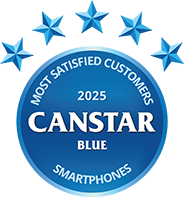Compare Mobile Plans
Compare Phone on a plan, SIM only Pre or Post-Paid Mobile Plans.
Our ratings compare a range of smartphones on customer satisfaction, as rated by Australians. It’s like asking a bunch of people which smartphone brands they think are best, but in one place rather than trawling through websites and other reviews.
Canstar Blue surveyed 1,456 Australians for their feedback on smartphones they’ve purchased in the last two years. This refers to new smartphones (not refurbished or second-hand devices) that were bought outright or on a phone plan.
Survey respondents are asked to rate their satisfaction with their smartphone brand from zero to 10, with zero meaning extremely dissatisfied and 10 meaning extremely satisfied. Smartphone brand satisfaction is rated on the following criteria:
The winning brand is the brand that receives the highest Overall satisfaction rating. All the scores from the Overall satisfaction criteria are then combined and averaged to determine the overall winner.
To qualify in the ratings results, brands must have received a minimum of 30 responses to be included. Therefore, not all smartphone brands in the market will be compared in this survey. Brands rated in this survey are listed below in order of best overall satisfaction.
Find more information on our Most Satisfied Customers ratings.
Not sure which smartphone to buy? Check out our buying guide below.
The following table shows a selection of sponsored SIM Only plans on Canstar Blue’s database with links to referral partners.
 |
1 Month Contract (1 month min. cost $20) SIM Only Prepaid
|
Unlimited
GB |
$16.00 Cost/month |
Go to site |
The following table shows a selection of sponsored SIM Only plans on Canstar Blue’s database with links to referral partners.
 |
1 Month Contract (1 month min. cost $14) SIM Only Postpaid
|
30GB Data/month |
$14 Cost/month |
Go to Site |
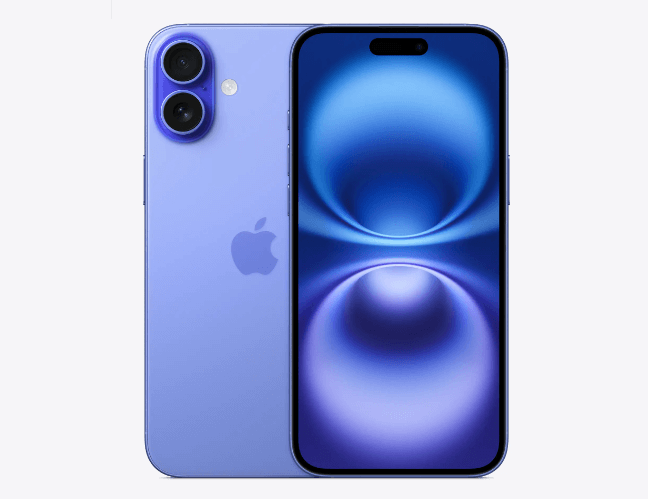
Apple reappeared as our smartphone ratings winner for the first time since 2022, with five stars for overall satisfaction, user friendliness, camera quality and design. It scored four stars for durability and three stars for both value for money and battery and charging performance.
Apple is one of the few phone brands to release only one simple range of phones each year. Its standard iPhone range — with the iPhone 16 series its most recent incarnation — is one of the most hotly anticipated annual phone launches. While the price tag might be too high for some, iPhones are packed with the best-of-the-best features Apple has to offer, and often boast some of the newest and most industry-leading camera systems on the market.
While its reputation is mostly built on its premium smartphone offerings, Apple also produces a more affordable iPhone SE with a slightly more budget-friendly price point and simplified features. This makes the SE a great alternative for anyone looking for that unique Apple operating system, but without all the bells and whistles.
Read our reviews:
Shop online now
Apple’s iPhones are available to buy from a range of retailers, including the Apple store. You can also buy your iPhone on a plan from the big three telcos — Telstra, Optus and Vodafone.
The following table compares a selection of 24-month 128GB iPhone 16e plans as published on Canstar Blue’s database, listed in order of their standard monthly cost, from the lowest to highest and then by data allowance, largest to smallest. Use our phone plan comparison tool to compare plans from a range of providers.
The following table compares a selection of 24-month 128GB iPhone 16 plans as published on Canstar Blue’s database, listed in order of their standard monthly cost, from the lowest to highest and then by data allowance, largest to smallest. Use our phone plan comparison tool to compare plans from a range of providers. This is a selection of products with links to a referral partner.
The following table compares a selection of 24-month 128GB iPhone 16 Plus plans as published on Canstar Blue’s database, listed in order of their standard monthly cost, from the lowest to highest and then by data allowance, largest to smallest. Use our phone plan comparison tool to compare plans from a range of providers. This is a selection of products with links to a referral partner.
The following table compares a selection of 24-month 128GB iPhone 16 Pro plans as published on Canstar Blue’s database, listed in order of their standard monthly cost, from the lowest to highest and then by data allowance, largest to smallest. Use our phone plan comparison tool to compare plans from a range of providers. This is a selection of products with links to a referral partner.
The following table compares a selection of 24-month 256GB iPhone 16 Pro Max plans as published on Canstar Blue’s database, listed in order of their standard monthly cost, from the lowest to highest and then by data allowance, largest to smallest. Use our phone plan comparison tool to compare plans from a range of providers. This is a selection of products with links to a referral partner.
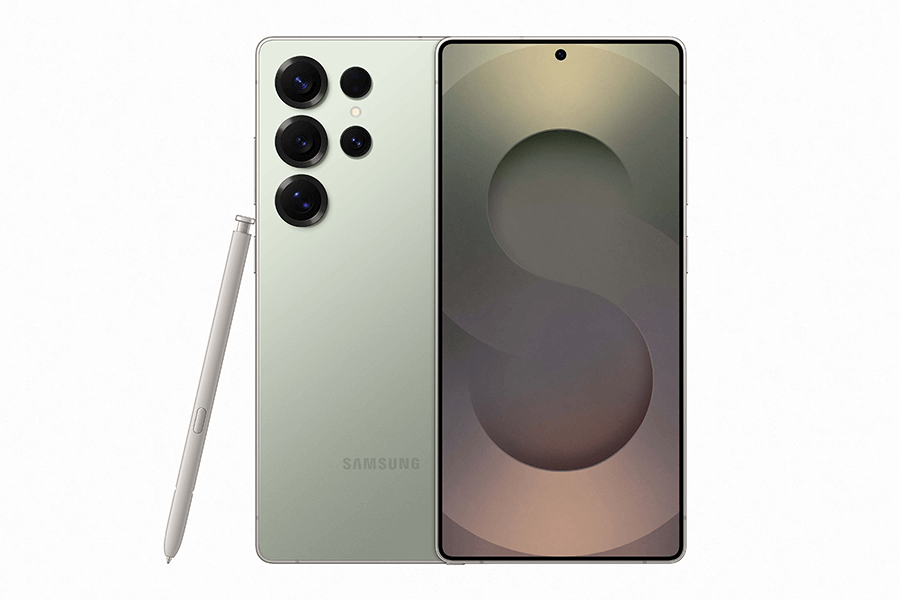
Previous back-to-back winner Samsung dropped down to second spot, scoring four stars for overall satisfaction, user friendliness, battery and charging performance, design and value for money. It scored five stars for both durability and camera quality.
Advertisement Samsung Galaxy S25 Ultra Save $300 and receive a $200 Trade-In Bonus. *T&C’s Apply
Samsung is arguably the king of the Android phones with a loyal customer base — and it’s not without reason. Each year the tech giant releases its latest smartphones, with the company’s flagship Galaxy S series (including the Galaxy S25 series) being one of the most popular premium phone ranges. The S series consistently offers some of the best phone specs and features on the market.
Not only does Samsung produce one of the best premium smartphones available, but it also regularly releases a supporting range of smartphones including its foldable devices, the Galaxy Z series, along with its more budget-friendly Galaxy A series. No matter the type of phone you’re looking for, it’s likely Samsung will have something to suit your needs.
Read our reviews:
Shop online now
You can buy Samsung phones outright from a range of retailers (including direct from Samsung) or on a plan from several telcos. Samsung’s most popular devices, such as the Galaxy S and Galaxy Z series, are readily available on phone plans from the telcos, but you might find only a limited number of its cheaper devices will be available on a plan.
The following table shows selected published 24-month plans for the 512GB Samsung Galaxy S25 on Canstar Blue’s database, listed in order of standard monthly cost, from the lowest to highest and then by data allowance, largest to smallest. Use our tool for mobile phone plan comparison to see a wider range of plans from other providers. This is a selection of products with links to a referral partner.
The following table shows selected published 24-month plans for the 512GB Samsung Galaxy S25+ on Canstar Blue’s database, listed in order of standard monthly cost, from the lowest to highest and then by data allowance, largest to smallest. Use our tool for mobile phone plan comparison to see a wider range of plans from other providers. This is a selection of products with links to a referral partner.
The following table shows selected published 24-month plans for the 512GB Samsung Galaxy S25 Ultra on Canstar Blue’s database, listed in order of standard monthly cost, from the lowest to highest and then by data allowance, largest to smallest. Use our tool for mobile phone plan comparison to see a wider range of plans from other providers. This is a selection of products with links to a referral partner.
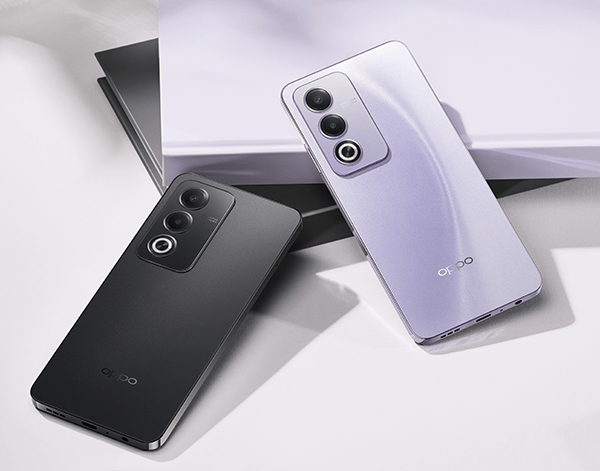
OPPO took out third place, with four stars for overall satisfaction, user friendliness, durability, camera quality and design. It was the only brand to score five stars for battery and charging performance, and also scored five stars for value for money.
OPPO is a well-known brand in its home market of China, but has continued to grow its international presence over the years. It’s a brand known for innovative design, great features and reasonably affordable price points.
It’s perhaps best known for its range of budget-friendly devices — the A series — packed with great features at cheaper prices. OPPO also produces the more design-forward Reno series and the premium Find X series, which has positioned itself as a strong competitor to Samsung’s Galaxy S series in recent years, along with its Find N flip and fold phones.
Read our reviews:
Shop online now
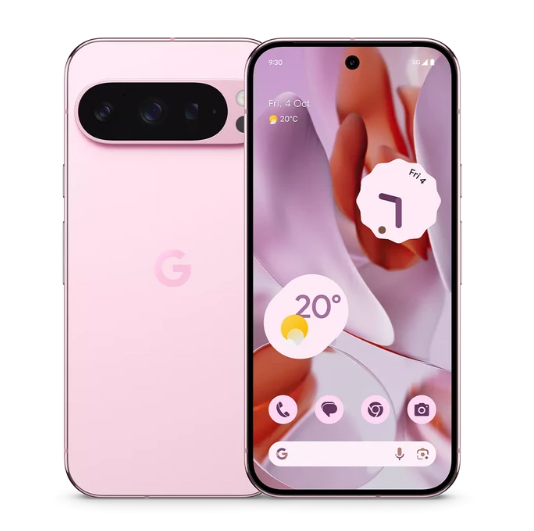
Google ranked fourth in our 2025 ratings, with a score of four stars for overall satisfaction, user friendliness, durability, design and value for money. While it scored three stars for battery and charging performance, it scored five stars for its camera quality.
Google, much like Apple, keeps its phone lineups very simple with a small range of devices released each year under the Pixel name. Its Pixel phone combines both software and hardware to offer a powerful performance and intuitive user experience.
The Pixel devices are mostly priced on the premium end of the spectrum (but typically a bit cheaper than Samsung and Apple’s high-end phones). However, Google does release a more budget-friendly device, the Pixel 8a, which is still packed with great features. The most recent Pixel releases — the Pixel 9 series — included Google’s largest range released to date, along with the first of Google’s foldable devices to launch in Australia.
Read our reviews:
Google’s Pixel phones are available to buy outright from a range of retailers (including the Google online shop) and you can also buy them on a plan from select telcos.
The following table shows a selection of published 24-month plans for the 128GB Google Pixel 9 on Canstar Blue’s database, listed in order of cost, from the lowest to highest and then by data allowance, largest to smallest. Use our mobile phone comparison tool to see plans from a range of providers. This is a selection of products with links to referral partners.
The following table shows a selection of published 24-month plans for the 256GB Google Pixel 9 Pro XL on Canstar Blue’s database, listed in order of cost, from the lowest to highest and then by data allowance, largest to smallest. Use our mobile phone comparison tool to see plans from a range of providers. This is a selection of products with links to referral partners.
The following table shows a selection of published 24-month plans for the 256GB Google Pixel 9 Pro Fold on Canstar Blue’s database, listed in order of cost, from the lowest to highest and then by data allowance, largest to smallest. Use our mobile phone comparison tool to see plans from a range of providers. This is a selection of products with links to referral partners.
The following table shows a selection of published 24-month plans for the 256GB Google Pixel 9A on Canstar Blue’s database, listed in order of cost, from the lowest to highest and then by data allowance, largest to smallest. Use our mobile phone comparison tool to see plans from a range of providers. This is a selection of products with links to referral partners.
Rounding out our ratings is Motorola, which scored three stars in most categories including overall satisfaction, durability and camera quality. However, it scored its only five-star result for value for money.
Motorola has been one of the most well-known mobile phone manufacturers for decades, especially thanks to the iconic original Motorola Razr flip phone. However it’s positioned itself in the market as a more budget-friendly manufacturer than some of its competitors, offering competitive devices at a wide range of price points.
Its smartphone range includes something for everyone — from its budget-friendly E and G series, to the more premium Edge phones and its range of updated Razr flip phones. Motorola has also partnered with other well-known brands, including Dolby Atmos for its audio technology and Pantone for its device colours.
Beyond the seven smartphone brands featured in our ratings, there are many different smartphone manufacturers on the Australian market. However, not all brands quality for our ratings (based on the minimum sample survey size).
This doesn’t mean these other brands aren’t worth exploring. The smartphone market is extremely competitive, and while many brands featured in this rating tend to produce premium smartphones, there are other names offering devices at a range of price points, so it’s still worth exploring your options. Here are some other brands you may wish to look into.
Smartphones are an important necessity for most of us, making our lives simpler and communication easier, so if you need a new phone, it’s a hard purchase to put off. With so many devices released each year, it can also be hard to know what phone is best for you — not to mention how much money you should spend.
Of the Australian phone buyers we surveyed in 2025, 67% purchased their phone outright, 18% purchased their new phone on a plan and 14% upgraded to a new phone with their current phone plan. Most Aussies also prefer to buy their smartphone in store, whether they researched in store and bought in store (14%), researched online and bought in store (36%) or did not research but purchased in store (13%).
While some brands remain competitive with cheaper and more affordable phones, Aussies are still paying a lot for their smartphones. The average price paid by those who purchased outright is now $978.60 (an increase from the average outright price of $818 in 2024). Those who bought their phone on a plan are paying $74.50 per month on average in 2025, a slight increase from the $71 per month average in 2024. Of those surveyed, 42% set a budget and purchased their device within their budget.
Price was the main purchasing factor for 22% of survey respondents, but over a quarter (27%) stated that the phone brand was their main factor in their purchasing decision. Just 11% chose their phone primarily for its features, while 8% of respondents chose their phone mainly for the camera quality.
In a crowded market with plenty of options, Aussies are still showing a lot of brand loyalty, with 41% of survey respondents always purchasing the same brand of smartphone. Of those respondents, 62% said they bought the same brand because their brand was ‘the best’, while 63% chose the same brand simply because they are used to the way it operates. 25% stated they bought the same brand out of habit.
However, with each year comes a slew of phone releases and upgrades, which can be overwhelming for some. While 11% of respondents think they would have been happier with a basic phone that cost less than the one they purchased, while 24% compared specs of models of the same phone lineup.
While it’s pretty much an essential item for most of us to have, there is still a lot to think about before purchase. Here are some pros and cons you might wish to consider.
Pros:
Cons:
Not all smartphones are created equal. While they all typically follow the same formula — touchscreen functionality with built-in cameras, cellular and internet connectivity — there’s a wide range of smartphones on the market at any given time and they can vary greatly in price and features.
There are plenty of cheap and budget-friendly phones on the market, but just because it has a cheaper price tag, doesn’t mean it’s a bad phone. Often brands will use more simple features, such as a more basic camera setup, a more basic screen (resolution and materials), lower refresh rate and perhaps more simple or slightly older technology such as a basic or older processor.
These phones can be a great alternative for anyone who doesn’t want all the flashy extras and simply needs the basics such as internet access, calls and simple photo taking. These days, the technology in smartphones is so good that cheaper phones available today might be of a better quality, and have better quality cameras, than premium phones of several years ago.
Some smartphones might also be designed for a specific user. There are some phones on the market specifically focused on mobile gaming, with more powerful processors and bigger batteries. While other phones, such as foldable phones or phones with a stylus, could be aimed at multitaskers and people who tend to use their phones for work and/or study purposes. There are also devices that include photography and videography features that are useful to content creators and photography enthusiasts.
It’s important to consider what you need from your smartphone. If you want a device with only the basics and don’t take too many photos, you might want to look at a budget-friendly handset, while anyone who regularly enjoys mobile gaming might want a phone designed to withstand the intensive usage. Just because a phone has all of the ‘best’ features and flashy extras, doesn’t mean it’s going to be the best phone for you.
Choosing a smartphone to buy can be complicated and confusing, especially considering the sheer amount of phones released each year. Even if you have a clear picture of which brand or operating system you want, it can be hard to distinguish between models, and you might even fall into the trap of buying the more expensive phone just for the sake of it.
However, taking a more considered approach to buying a smartphone could help you find a device suited to your needs and save you some money along the way.
Perhaps the first point of call is to set yourself a realistic budget for how much you’re willing to spend on your phone. Considering some phones can cost upwards of $1,000, buying the most premium phone could be out of reach for some.
Even if you opt to buy on a phone plan and split your device costs over 12, 24 or 36 months (depending on the telco you buy through), that monthly cost could still be expensive, so consider it as part of your weekly budget and whether you can afford the device repayments and cost of the bundled plan. Telcos will usually require you to bundle with a postpaid phone plan for the duration of your repayment period and these plans can be more expensive than some SIM-only plans.
When comparing smartphones, you might wish for a certain brand or operating system, especially if you’re familiar with and comfortable using one brand/OS over others. While there are two major operating systems (Apple’s iOS and Google’s Android which is used on most other devices), there are still differences between how some Android devices operate, so you might also have a preference of brand even if you’re looking at an Android phone.
Once you have a general idea of how much you’re willing to spend, and whether you have a specific brand or operating system preference, it’s time to compare the phone’s features and specs.
Consider how you mostly use your phone. Do you watch a lot of videos? If so, you might want to look into a phone with a larger and/or high-quality screen. If you prefer to go headphone-free, you might also want to look into devices with a focus on quality built-in speakers. For keen mobile gamers, you’ll want to look at gamer-specific phones, or phones with top-quality processors and big batteries. If you take a lot of photos, you’ll probably want to compare phones with great camera specs and a range of photography features.
While it might be tempting to want the ‘best’ features, being more realistic about your needs and how you mostly use your phone could save you some money. For instance, if you’re comparing premium devices such as iPhones or Samsung Galaxy S devices, and you don’t take too many photos, you can save a bit of money by going for the standard flagship model (such as the iPhone 15 or Samsung Galaxy S23) rather than the ‘pro’ version (such as the iPhone 15 Pro or Samsung Galaxy S23 Ultra).
If you’ve got a particular phone in mind, it might be worth waiting for big sales periods to pick up a discount on your device. Many brands, retailers and telcos offer discounts on devices throughout the year, especially during big sales events like Black Friday.
Another way to save money is to go for the older version of a device. This could mean that instead of buying the phone released this year, you pick up the model released the previous year (if there is still stock available). Considering many phone releases offer incremental updates to the predecessor, having a phone with technology that’s a year old might not even be noticeable.
If you’re not in desperate need for your new phone, and you have your eye on a certain model, it might even be worth holding off the upgrade until the brand releases its new device and drops the price of the phone you’ve been looking at.

Emma Bradstock has been an authority on consumer phone, internet, technology and streaming markets in Australia for over five years, with a dedication to providing Aussies with all the information they need to make better purchasing decisions. She holds a Bachelor of Arts in Communications and Media from Macquarie University and has a decade of professional writing experience in print and digital media.
Meet the Editorial Team
Samantha Howse is Canstar Blue’s Consumer Research Specialist, coordinating the consumer research program behind our customer satisfaction awards across Canstar and Canstar Blue in Australia and New Zealand. Sam has earned a Bachelor of Business (Marketing) from Griffith University and, with seven years in market research and 2 years in marketing, she is experienced in survey design, implementation and analysis, coupled with an understanding of marketing principles and best practice.
Meet the Research TeamSmartphones can vary greatly in price. You can find cheap and basic smartphones around the $100-$200 AUD price mark, while the most expensive phones can cost well over $1,000 and even $2,000 AUD.
Often the technology and storage size (in the case of premium devices) will determine how much you pay for a device. Companies like Apple and Google will focus most of their attention on producing premium smartphones with the best technology currently available, however they can also repackage parts of this technology, and perhaps tech used in some older devices, to create a more affordable alternative.
Keep in mind that going for a cheaper smartphone might mean you need to compromise on some features and that the performance of the device might not be as quick or seamless as a premium device.
There are several options for buying your new smartphone. You can buy your phone outright from retailers, and some device manufacturers may have a retail and/or online store where you can buy your phone. Some telcos also offer smartphones which are usually available to buy on a phone plan (the handset bundled with a phone plan), although some telcos also offer the option to buy your device outright. Here are some of the retailers and telcos offering smartphones.
Here are past winners of Canstar Blue’s Most Satisfied Customers – Smartphones ratings:

Best-Rated Phone on a Plan Providers in Australia - July 3rd
If you’re shopping around for a new mobile phone plan, keep an eye out for these deals. Compare phone plan deals with Canstar Blue.
– Read more
Australia’s Best-Rated Business Mobile Plan Providers - May 1st
Looking for a postpaid plan, but not ready to commit to a two-year contract? 12-month phone plans have become hot alternative to 24-month plans, meaning that it’s a competitive marketplace and a consumer’s playground. With …
– Read more
Australia’s Best-Rated Business Mobile Plan Providers - May 1st
Compare student phone plans and deals from Telstra, Optus, Vodafone and other telcos in this Canstar Blue review.
– Read more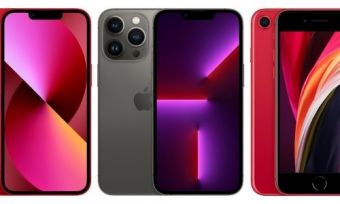
Australia’s Best-Rated Business Mobile Plan Providers - March 26th
Compare Vodafone iPhone plans at Canstar Blue. See the latest prices and deals for the iPhone X, iPhone 8 and all older iPhone models.
– Read more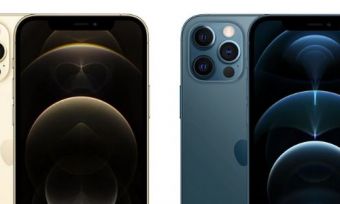
Australia’s Best-Rated Business Mobile Plan Providers - March 26th
Compare all Optus iPhone plans in Australia with Canstar Blue, including the latest deals on the iPhone X, iPhone 8 and 8 Plus.
– Read more**Max. Data/Billing Period
The amount of data the provider has advertised for the billing period of their plan.
Billing periods usually range from 28 to 31 days, but can vary - contact the provider for the billing period costs and inclusions.
Actual product inclusions can be found on the provider’s website.
^^Advertised Cost/Billing Period
The advertised cost the provider has advertised for the billing period of the plan.
Billing periods usually range from 28 to 31 days, but can vary - contact the provider for the billing period costs and inclusions.
Actual product inclusions can be found on the provider’s website.
Unlimited Data
Referral Partners
By clicking on a brand, 'go to site', 'shop online', 'get quotes now', or 'see offer' button, you will leave Canstar Blue and be taken to our referral partner to compare. Canstar Blue may be paid for this referral. You agree that Canstar Blue’s terms and conditions apply to this referral.
Canstar Blue may earn a fee for referrals from its website tables, and from sponsorship of certain products. Fees payable by product providers for referrals and sponsorship may vary between providers, website position, and revenue model. Sponsorship fees may be higher than referral fees. Sponsored products are clearly disclosed as such on website pages. They may appear in a number of areas of the website such as in comparison tables, on hub pages and in articles. Sponsored products may be displayed in a fixed position in a table, regardless of the product's rating, price or other attributes. The table position of a Sponsored product does not indicate any ranking or rating by Canstar. The table position of a Sponsored product does not change when a consumer changes the sort order of the table. For more information please see How Are We Funded.
